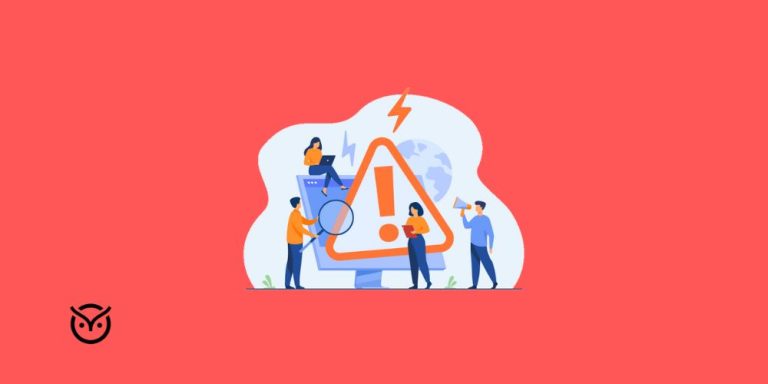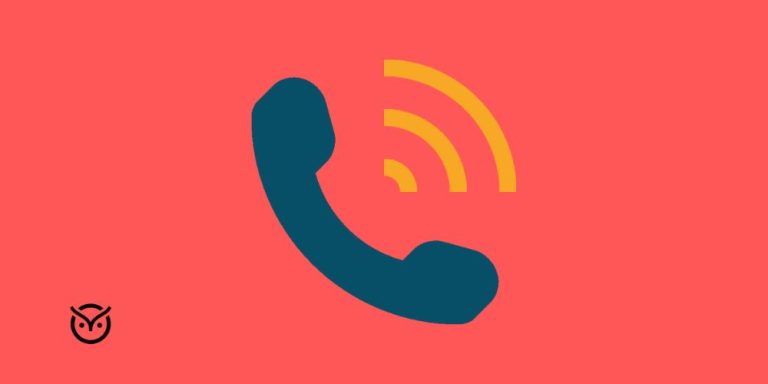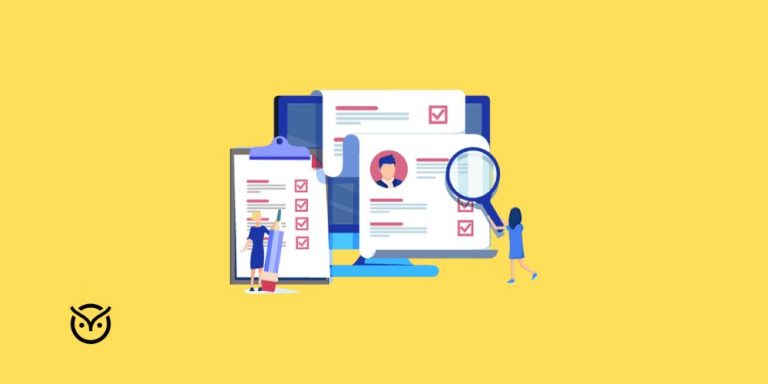Unconscious Hiring Bias in Recruitment: How Vettio Levels the Playing Field
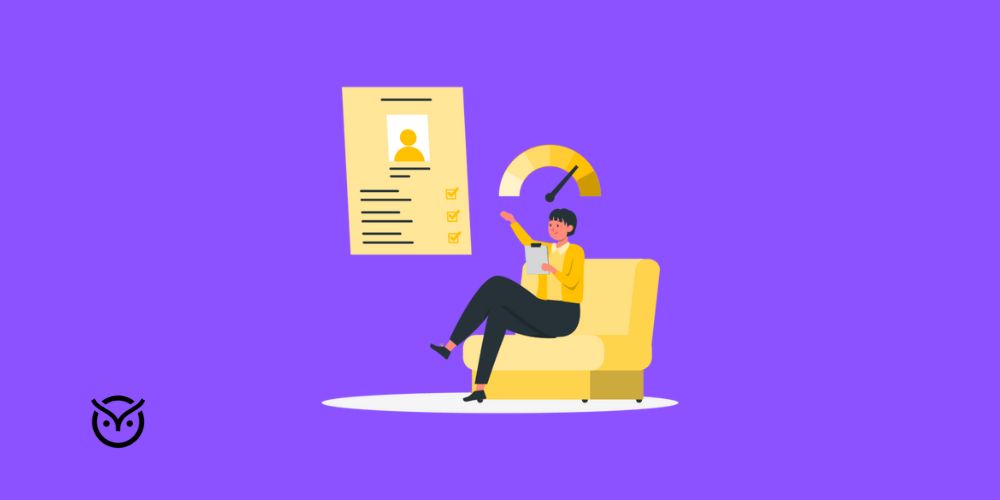
TL;DR
- Unconscious hiring bias in recruitment silently affects hiring choices.
- It leads to unfair evaluations, a lack of diversity, and missed talent.
- AI-powered tools are now helping companies make fairer, data-based decisions.
- Avoid gender bias with structured interviews and training.
- Vettio reduces bias through data-driven recruitment process automation.
Ever wondered why some candidates get rejected even when they check every box? That’s the silent hand of unconscious hiring bias in recruitment, which is a mental shortcut that influences decisions without awareness. From the tone of a voice to a surname, biases shape hiring outcomes more than job skills. It’s not always deliberate, but its impact is real.
The good news? Technology is finally helping level the field. With AI-backed tools and fair hiring practices, recruiters can detect patterns, standardize evaluations, and make choices driven by merit, not bias. Ahead, you’ll learn how to spot bias, what risks it brings, and how AI tools like Vettio help companies hire smarter and fairer.
What Is Unconscious Hiring Bias in Recruitment?
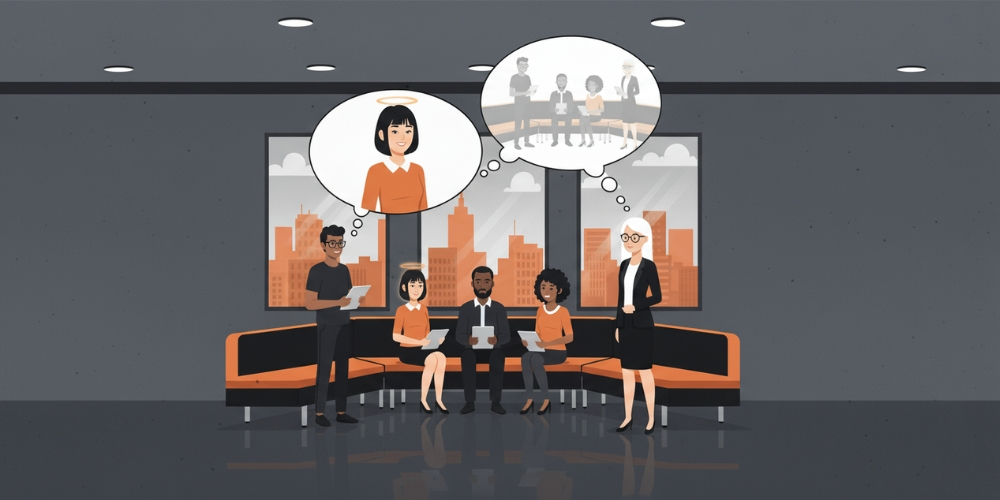
Unconscious hiring bias in recruitment refers to hidden prejudices that influence hiring decisions without intent. It’s what happens when personal experiences, social norms, or stereotypes affect how recruiters perceive candidates.
In simple words, bias is when two people with identical resumes are judged differently because of gender, age, ethnicity, or even accent. This isn’t just theory. A 2023 study found that applicants with “white-sounding” names are 30% more likely to get hired than those with “black-sounding” names, even when qualifications matched.
Bias can take many forms, like affinity bias (favoring people who are “like us”), appearance bias (judging based on looks or dress), and implicit bias in hiring (unconscious attitudes affecting perception). Together, these shape decisions from resume screening to interviews.
Understanding these biases is the first step toward uncovering unconscious hiring bias in recruiting and interviewing. Once identified, they can be addressed through training, structured evaluation, and technology support.
Bias or Fair? Quick Hiring Decisions Game
A recruiter favors a candidate because they went to the same college.
A hiring manager prefers someone who “seems like a cultural fit.”
Shortlisting is based only on required skills and relevant experience.
A resume is rejected because the candidate took a career break to care for family.
A candidate with an accent is scored lower on “communication” despite clear answers.
Every candidate gets the same questions with a scored rubric and panel review.
Your Bias Awareness Score
0 / 6
The Risks of Unconscious Hiring Bias in Hiring
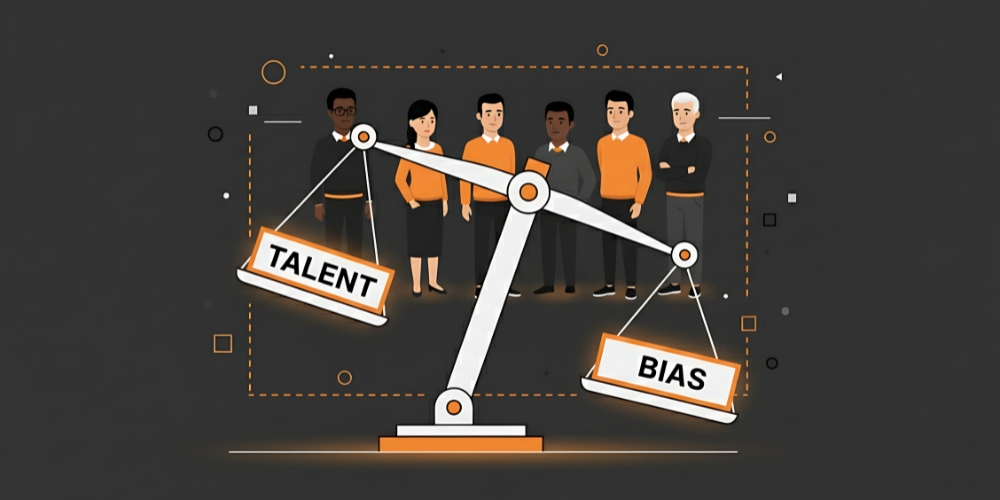
Bias is expensive. A biased recruitment process limits access to diverse talent, weakens company culture, and harms innovation. Yet many organizations still fall into the trap of unfair hiring practices examples, like overlooking women for leadership roles or assuming older candidates can’t adapt.
Bias also damages employer reputation. A Glassdoor survey revealed that 76% of job seekers consider workplace diversity a major factor when evaluating companies. Ignoring diversity not only shrinks the talent pool but also drives away top performers who value inclusion.
Real-world unconscious hiring bias in the workplace examples include managers promoting employees who mirror their behavior, recruiters dismissing resumes with unfamiliar universities, or interviewers judging accents instead of ability. The cost? Higher turnover, slower innovation, and a less dynamic workforce.
Hidden Cost of Bias — Sliding Calculator
Advanced assumptions
- 5 missed top candidates this year
- 10% talent pipeline shrinkage
- 13% innovation pipeline impact (estimate)
What this means for leadership
- Small drops in top-talent flow compound into large productivity losses over time.
- Improving fairness in screening and interviews can recover pipeline and reduce cost.
Tip: Pair this tool with structured interviews and bias-alerted job descriptions to cut loss at the source.
How AI Helps Reduce Unconscious Hiring Bias in Recruitment

Artificial intelligence can’t erase bias, but it can expose it. Modern AI recruiting tools analyze candidate data objectively, reducing human assumptions. Instead of scanning for “gut feel,” AI compares skill sets, experience, and performance data.
AI recruiting systems can detect 10 examples of unconscious hiring bias, such as:
- Gender bias in job descriptions.
- Affinity bias example during interviews.
- Age or racial stereotypes in shortlisting.
- Unequal questioning during interviews.
- Overemphasis on cultural “fit.”
- Recruitment bias in referral-based hiring.
- Accent or communication-based judgments.
- Resume filtering based on name patterns.
- Experience gaps viewed as incompetence.
- Preference for familiar academic backgrounds.
Tools like unconscious hiring bias interview training and unconscious hiring bias training for hiring managers help recruiters recognize and correct these patterns. Meanwhile, AI systems like Vettio use workforce planning and analytics to identify where bias occurs in hiring data, whether it’s in screening, interview scoring, or feedback loops.
By combining human oversight with automation, companies can avoid gender bias, create fairer evaluations, and make hiring data-driven. AI doesn’t replace recruiters. It empowers them to make more consistent, equitable decisions.
Human vs. AI — Which shortlist is bias-free?
Two hiring shortlists. One was made by humans under time pressure. One was filtered by AI for skills and fairness. Pick the list you believe is more bias-free.
List A
6 candidates- Alex W. — Frontend Dev • 5 yrs • Same-school referral
- Chris T. — Backend Dev • 6 yrs • Gap year flagged
- Sam R. — Data Analyst • 4 yrs • “Strong culture fit” note
- Jordan P. — DevOps • 7 yrs • Accent flagged in notes
- Taylor K. — QA Eng • 3 yrs • Non-target university
- Pat M. — PM • 8 yrs • Same-team referral
List B
6 candidates- R. Ahmed — Frontend Dev • 5 yrs • Skills match 92%
- L. Chen — Backend Dev • 6 yrs • Skills match 89%
- M. García — Data Analyst • 4 yrs • Skills match 90%
- S. Patel — DevOps • 7 yrs • Skills match 88%
- A. Johnson — QA Eng • 3 yrs • Skills match 85%
- K. Okoye — PM • 8 yrs • Skills match 91%
List B was filtered by AI for skill relevance and fairness.
- AI removed 3 gender-coded filters from job criteria.
- AI equalized interview question sets to reduce variability.
- AI increased shortlist diversity by 42% while keeping skill match high.
Would you trust AI more after this?
Results are local to this page and reset when you refresh.
Best Practices for Recruiters to Minimize Bias
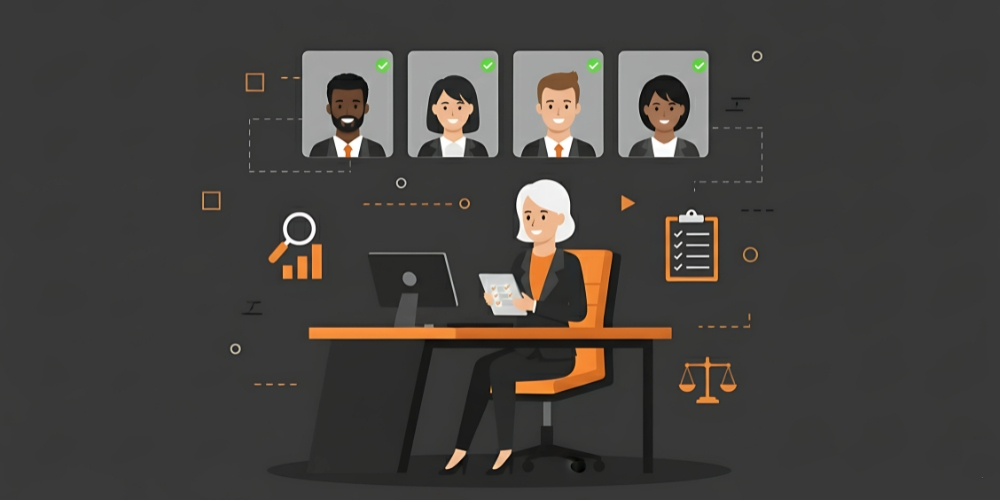
Bias isn’t something you fix once. It’s something you keep checking for. Recruiters play a central role in making hiring more inclusive, and that means pairing awareness with action.
Here are a few simple, effective practices that work:
Use structured interviews.
Ask every candidate the same questions and score their answers using predefined criteria. It removes “gut feel” decisions and improves fairness.
Diversify hiring panels.
Having interviewers from different backgrounds helps spot and challenge hidden bias. A diverse panel is also a better reflection of the company’s culture.
Audit your job descriptions.
Language matters. Words like “rockstar” or “aggressive” subtly push some candidates away. Tools that flag gender-coded words help recruiters avoid gender bias early in the process.
Collect data and actually use it.
Regularly track who gets shortlisted, interviewed, and hired. Patterns reveal more than intuition ever will. This is where workforce planning and analytics turn hiring data into insight.
Invest in continuous education.
Unconscious hiring bias training for hiring managers and HR teams is no longer optional. When paired with unconscious hiring bias interview training, it equips recruiters to spot bias even under pressure.
Bias can never be eliminated completely, but it can be minimized. Recruiters who combine empathy, structure, and technology end up hiring better people, faster.
How Vettio Levels the Playing Field
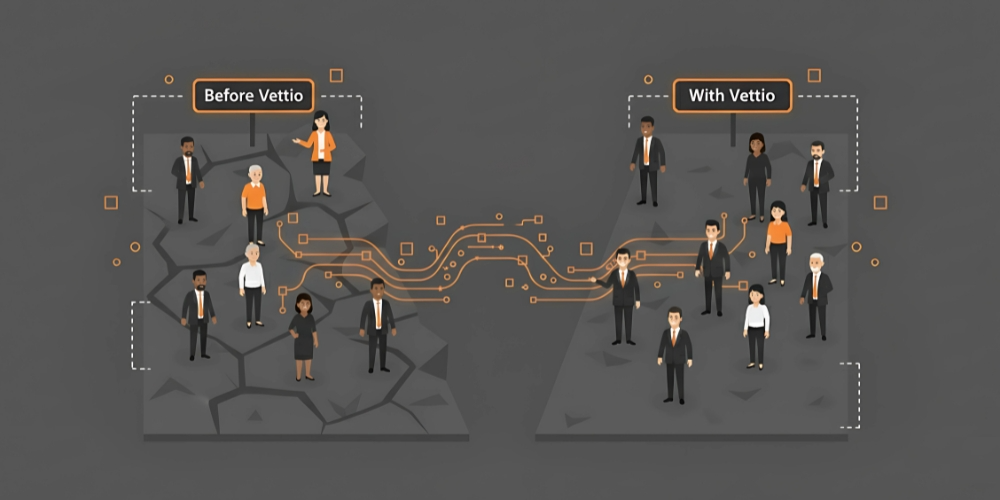
Bias thrives in silence. Vettio breaks that silence with data.
Vettio’s platform helps companies measure and manage unconscious hiring bias in recruitment by making every hiring step transparent. It doesn’t judge. It tracks. From candidate sourcing to interview feedback, Vettio’s algorithms highlight where recruitment bias might creep in.
Conclusion
Every bias begins in the mind, but it doesn’t have to end in the workplace.
Unconscious hiring bias in recruitment quietly shapes outcomes, even in companies with the best intentions. Recognizing it is a sign of maturity. Recruiters who commit to fairness build stronger, more innovative teams.
FAQs
How does unconscious hiring bias affect hiring decisions?
Unconscious hiring bias can influence who gets shortlisted, interviewed or offered a job. It causes recruiters to favor candidates who share a similar background, behavior or appearance, over those who may be equally or more qualified.
What are best practices for recruiters to reduce bias alongside using AI tools?
The best approach blends structure and awareness. Recruiters should use standardized interviews, track diversity metrics and combine unconscious hiring bias training for hiring managers with AI-based tools like Vettio that highlight and reduce bias throughout the recruitment process.
Is unconscious hiring bias in recruitment always negative?
Not all bias feels negative but even “positive” bias can lead to unfairness. For instance, preferring candidates from a certain school or region may seem harmless but it still excludes talent that doesn’t fit the mold.
Why is reducing unconscious hiring bias important for business success not just compliance?
Reducing bias strengthens decision quality, improves workforce diversity and helps attract talent that drives innovation. Beyond compliance, fairness in hiring builds trust, better culture and long-term business performance.

